In the mid 1980s, few actors had the career trajectory of Kevin Costner. The Californian native was establishing himself as Hollywood’s latest ‘Golden Boy’; a charismatic, compelling screen presence exuding savvy industry smarts combined with a fierce determination to succeed. He would soar to Oscar-winning heights, plummet to unbankable lows and now, with three films set for release, is in the midst of a well-orchestrated career resurgence.
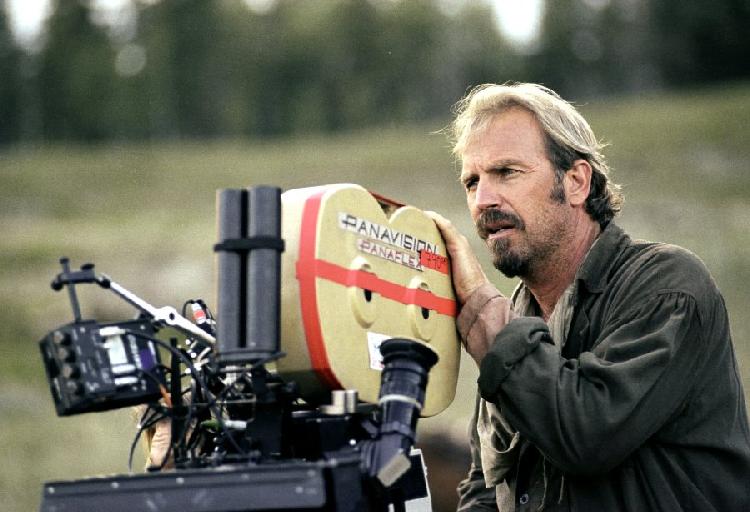
Costner threw in a corporate marketing career to back his talent in Hollywood. Legend has it that a chance encounter with the late Richard Burton, during which the notorious Welsh actor loudly encouraged him to follow his dream while sharing a seat on a commuter flight, was the turning point for the then twenty -something Costner.
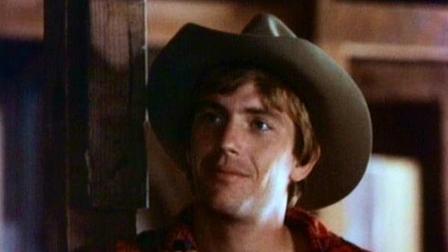 However, the early years were a slog. His debut, Richard Brander’s Sizzle Beach USA (aka Malibu Hot Summer; pictured, left), was an exploitation cheapie filled with soft-core nudity that surfaced in 1981 but was reportedly filmed in 1978. Bit parts in Chasing Dreams, Ron Howard’s Night Shift, the Hollywood biopic Frances and the Jon Voigt vehicle Table for Five paid the bills, but Costner was not being noticed by casting agents. His congenial good looks and laidback ease in front of the camera suggested his range was limited.
However, the early years were a slog. His debut, Richard Brander’s Sizzle Beach USA (aka Malibu Hot Summer; pictured, left), was an exploitation cheapie filled with soft-core nudity that surfaced in 1981 but was reportedly filmed in 1978. Bit parts in Chasing Dreams, Ron Howard’s Night Shift, the Hollywood biopic Frances and the Jon Voigt vehicle Table for Five paid the bills, but Costner was not being noticed by casting agents. His congenial good looks and laidback ease in front of the camera suggested his range was limited.
This all changed in 1983. Having scored a lead role in the forgettable gambling comedy, Stacy’s Knights, he befriended director Jim Wilson, establishing a friendship that would lead to a production partnership named Tig Productions. Costner generated industry heat with a small but potent role in Lynne Littman’s nuclear-war drama, Testament. But it was as Alex, the college friend whose suicide brings the ensemble of characters together in Lawrence Kasdan’s The Big Chill, that Costner would find his breakthrough role; ironically, flashback scenes involving Costner were entirely cut from the film, but the director was suitably impressed. Kasdan let Costner steal every scene as ace gunslinger Jake in his acclaimed 1985 western, Silverado (featured, below).
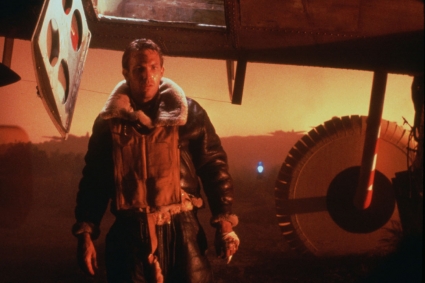 It would be the year that audiences accepted Kevin Costner as leading man material. Long-time friend, Kevin Reynolds, directed him in the college road-trip cult favourite, Fandango; John Badham captured him at his smouldering best in the sports drama, American Flyers. And Steven Spielberg applied his magical touch by casting him in the pilot episode of the anthology TV series, Amazing Stories (pictured, right).
It would be the year that audiences accepted Kevin Costner as leading man material. Long-time friend, Kevin Reynolds, directed him in the college road-trip cult favourite, Fandango; John Badham captured him at his smouldering best in the sports drama, American Flyers. And Steven Spielberg applied his magical touch by casting him in the pilot episode of the anthology TV series, Amazing Stories (pictured, right).
By the turn of the decade, Kevin Costner was one of Hollywood’s biggest stars. In 1987, he fronted Roger Donaldson’s sleeper hit, No Way Out, opposite Gene Hackman (featured, below; the actor being interviewed for the films release); Brian De Palma found in the actor his Eliot Ness, the unshakeable moral core of the gangster classic, The Untouchables. Ron Shelton’s Bull Durham solidified the actor’s sex symbol status, the heat generated opposite Susan Sarandon as on-the-slide baseball star Crash Davis a highlight of the cinema year; the All-American goodness of the actor infused Field of Dreams, helping to make the gentle fantasy-drama Costner’s biggest hit to date.
Despite the hiccup that was Tony Scott’s Revenge, a trouble-plagued shoot that audiences ignored, 1990 was the year that Costner reached the pinnacle of Hollywood’s power elite. His directorial debut, the 3 hour western Dances with Wolves (featured, below), defied all expectations; at a time when the genre was considered box office poison, it would win seven Oscars, including Picture and Director, and gross $500million worldwide. Costner could do no wrong; in quick succession, he hit big with Robin Hood Prince of Thieves, Oliver Stone’s JFK and the blockbuster romance, The Bodyguard, opposite friend Whitney Houston.
Career wobbles beset Costner when he decided to broaden his range. A dark, violent turn as an escaped convict in Clint Eastwood’s A Perfect World was a critical hit, but the public liked their Costner squeaky clean and heroic; it bombed. Kasdan’s dark, mythic western, Wyatt Earp, with a grizzled Costner in the lead role, was an expensive dud; Jon Avnet’s The War, in which Costner played a troubled Vietnam vet trying to raise Elijah Wood, was DOA.
Costner then undertook the project that would redefine his career. The mega-budgeted action epic Waterworld would garner headlines beyond the bitchy trade papers; its spiralling cost became the thing of legend, the money-pit production problems earning it the moniker, ‘Kevin’s Gate’. Contrary to popular belief, it did not bomb when it finally hit theatres in 1995, though the cost overruns certainly prevented it from turning a profit.
He reteamed with Shelton for the likable golfing comedy, Tin Cup, in 1996. But his standing hit rock-bottom a year later when The Postman, a wildly over-indulgent post-apocalyptic adventure that he starred in and directed, got scathing reviews and withered away at the box-office (the US$18million return on its US$80million budget means it is a far greater financial blackhole than Waterworld ever was). Costner’s fan base eroded further in the wake of a costly, high profile divorce from his sweetheart bride, Cindy.
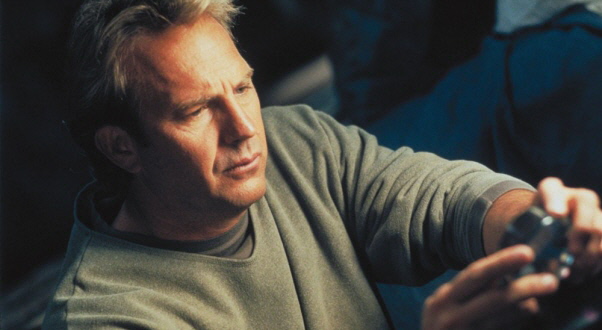 The next decade saw Costner working, though the output seemed mostly directionless. He exhibited strong character actor traits in Thirteen Days (2000), the terrific Open Range (2003), opposite Joan Allen in The Upside of Anger (2005) and as part of the ensemble in Company Men (2010), but mostly coasted in underwhelming vehicles that failed to restore his lustre (Message in a Bottle, 1999; For Love of the Game, 1999; 3000 Miles to Graceland, 2001; Dragonfly, 2002 [pictured, right]; Rumor Has It, 2005; The Guardian, 2006; Mr Brooks, 2007; Swing Vote, 2008; The New Daughter, 2009).
The next decade saw Costner working, though the output seemed mostly directionless. He exhibited strong character actor traits in Thirteen Days (2000), the terrific Open Range (2003), opposite Joan Allen in The Upside of Anger (2005) and as part of the ensemble in Company Men (2010), but mostly coasted in underwhelming vehicles that failed to restore his lustre (Message in a Bottle, 1999; For Love of the Game, 1999; 3000 Miles to Graceland, 2001; Dragonfly, 2002 [pictured, right]; Rumor Has It, 2005; The Guardian, 2006; Mr Brooks, 2007; Swing Vote, 2008; The New Daughter, 2009).
It would be television, a medium that Costner had steered clear of since his Amazing Stories episode 28 years ago, that began the resurrection of Kevin Costner’s industry standing. His 2012 mini-series passion project, Hatfields & McCoys, was a ratings juggernaut and would earn Costner the Best Actor gongs at the Golden Globe, Emmy and Screen Actors Guild ceremonies.
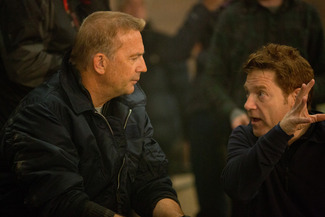 Fresh bigscreen opportunities beckoned; Zach Snyder played upon Costner’s down home warmth, casting him as Pa Kent in Man of Steel. He will next be seen as mentor William Harper in director Kenneth Branagh’s franchise reboot, Jack Ryan: Shadow Recruit (pictured, left), opposite Chris Pine and Keira Knightley, the role a vote of confidence from the studio heads who would not back him for most of the last decade. On its heels will be two films that recast Costner in mature leading man roles – Ivan Reitman’s rousing NFL drama, Draft Day, and the violent Taken-type actioner, 3 Days to Kill (featured, below), from producer Luc Besson. Beyond that, he softens his image by reteaming with Upside of Anger director Mike Binder for the tearjerker Black and White before returning to the sports film arena in New Zealand director Niki Caro’s track-&-field tale, McFarland.
Fresh bigscreen opportunities beckoned; Zach Snyder played upon Costner’s down home warmth, casting him as Pa Kent in Man of Steel. He will next be seen as mentor William Harper in director Kenneth Branagh’s franchise reboot, Jack Ryan: Shadow Recruit (pictured, left), opposite Chris Pine and Keira Knightley, the role a vote of confidence from the studio heads who would not back him for most of the last decade. On its heels will be two films that recast Costner in mature leading man roles – Ivan Reitman’s rousing NFL drama, Draft Day, and the violent Taken-type actioner, 3 Days to Kill (featured, below), from producer Luc Besson. Beyond that, he softens his image by reteaming with Upside of Anger director Mike Binder for the tearjerker Black and White before returning to the sports film arena in New Zealand director Niki Caro’s track-&-field tale, McFarland.
Over the lean years, Kevin Costner lost none of the drive that took him to the top of the Hollywood pecking-order. But with age (he turns 59 on January 18), he has softened; the backlash he suffered in the eyes of the industry and the audience (his detractors cite a ruthless brashness and egotistical air weaknesses) has waned. He is slipping comfortably into the role of consummate professional and learned statesmen within the studio system. With nothing left to prove, Kevin Costner appears to be embracing the next phase of his career with grace and humility.
Jack Ryan: Shadow Recruit opens January 16 in Australia and North America.